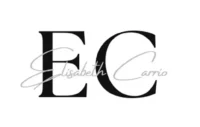Yet another new movement from the United States, this time in the field of organizational management. And yet, this movement is based on age-old principles and a fundamental question:
How to reconcile intuition and rationality?
How to make forward-looking decisions based on meditation rather than immediate action?
It is surprising that it has taken so long for intuition to be recognized as a management tool in its own right, when it has long been relegated to the background in favor of a suspicious rationality. This is precisely what the U theory, developed by Otto Scharmer.
This model speaks of the emergence of the future, of leaders listening to their inner voice, of creativity unleashed by self-awareness. A breath of fresh air in the world of management.
Two decision-making models
Theory U distinguishes two main decision-making schemes:
The classic model, taught in most universities: I act, I observe, I reflect, I plan... then I act again. It is based on the past, lived experiences, and on their modeling.
The emerging model, revolutionary: I listen, then I act. Here, listening precedes and guides action. It is a radical inversion of our usual logic – and a profound transformation of our way of managing change.
Four levels of response to change
For Scharmer, management means managing change. He identifies four levels of response:
Immediate reaction : rapid response to a new situation.
Reorganization : reformulation of rules, reconfiguration of processes and structures.
Re-evaluation of beliefs : questioning of values, adaptation of cultural and mental benchmarks.
Connection to the source : return to the primordial energy, to the founding inspiration of the organization, to this breath which carried its initial success.
Every organization, like any living organism, follows a curve: birth, growth, maturity... then decline, unless a new inspiration - often collective - restarts a new cycle. This source of inspiration does not reside only in the mind of the leader, however brilliant, but in the "spirit of the times," like a egregore to which one must reconnect.
The “Black Hole of Leadership”
How to find this source?
By returning to ourselves. By listening to our inner voice – which we sometimes call intuition, Sometimes inspiration. Otto Scharmer speaks of the " black hole of leadership »: an invisible, mysterious space, like a gravitational center from which creative energy emerges. Impossible to observe directly, but fundamental to access the original information. This information, as Ervin Laszlo, philosopher of science, says, would be at the very root of reality, alongside matter and energy.
The symbolism of the U
The U illustrates this process:
The descent : observe, again and again.
The base from U: reconnect with yourself, with the source.
The ascent : act from this new connection, in an inspired and aligned dynamic.
Scharmer details this process in his book and illustrates it with numerous examples of organizations, both public and private, that have successfully experimented with this approach.
A societal change in progress
This model offers a paradigm shift :
From management based on domination, rationality and performance, to management centered on listening, intuition, collaboration and presence.
He translates a evolution of values, passing from the conquering masculine (theanimus) in the intuitive feminine (theanima). An opening of intelligence, heart and desire, where the expression of what one feels becomes legitimate and fruitful.
Conclusion: An expanded field of consciousness
The fundamental contribution of Theory U is to allow us to broaden our field of awareness in a field – management – which has long been wary of the invisible, the sensitive, and the intuitive. It challenges hierarchical models to open the way to structures more collaborative, lively and agileBut this requires a real inner change: agreeing to listen, to transform oneself, and to trust in emergence.



